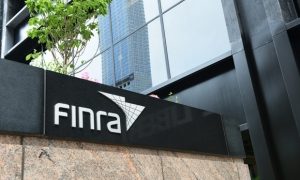 FINRA, the Financial Industry Regulatory Authority, will have evolution for its examination program in 2020.
FINRA, the Financial Industry Regulatory Authority, will have evolution for its examination program in 2020.
On the latest episode of FINRA’s Unscripted podcast, the three guests were all part of the Examination and Risk Monitoring unit.
The three guests were: Ornella Bergeron, senior vice president of the carrying and clearing and diversified firm groups; Tom Nelli, senior vice president of exams and standards; and Bill St. Louis, senior vice president of the retail and capital markets firm group.
The Examination and Risk Monitoring unit is headed by Bari Havlik who appeared on Unscripted a couple weeks back; her podcast can be found here.
In December 2019, Havlik announced a new leadership team which included Nelli, St. Louis, and Bergeron had been hired on.
A FINRA’s December 12, 2019, press release described the transformation.
“FINRA announced today the senior leadership team under the new examination and risk monitoring structure within the organization. This marks the consolidation of FINRA’s three exam functions into a single, unified program—a process that began in October 2018.
“FINRA regulates more than 3,600 firms and 630,000 individual brokers, and regularly examines every firm for compliance with FINRA’s rules and those of the Securities and Exchange Commission and the Municipal Securities Rulemaking Board. Those examination responsibilities previously were divided among three different programs responsible for business conduct, financial and trading compliance. The consolidation brings those programs under a single framework designed to better direct and align examination resources to the risk profile and complexity of member firms. The FINRA360 organizational review helped inform the development of the new framework by identifying areas for improvement in the current programs.”
On the podcast, Nelli described in some more detail how the evolved structure of the Examination and Risk Monitoring unit would affect the examination process going forward.
“Effective in January, each firm will be placed into one of the five groupings, and those five groupings are retail, capital markets, diversified, carrying and clearing, and trading and executions. And the examiners and the risk monitoring staff, and the investigators are all going to be residing in one of those five groupings.” Nelli said, “That’s really to help facilitate consistency and to grow familiarities in these business models. In a risk-based examination program, the better you understand the firm the better you are at identifying the risks and tailoring your exam to go at those risks.”
St. Louis noted in the podcast that retail clients add to the risk for a firm.
“It can be significantly different. For example, some sub-groupings don’t have retail clients. Their risks in that area may be significantly lower than obviously groups that have retail clients.”
He noted further that the new structure will help FINRA to tailor exams and risk monitoring, “Because we’re going to be set up in this subject matter experts both on the risk monitoring side and on the exam side, we will be able to identify what do the firms primarily do and focus on those particular risks, and they can vary greatly depending on the types of firms.”
As one example, a firm without retail clients would need less attention from FINRA oversight and examination focused on the firm’s sales practice.
FINRA is a self-regulatory organization; it was formed in 2007 when the regulatory arms of NYSE and NASD merged.












